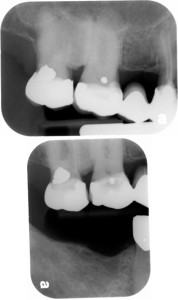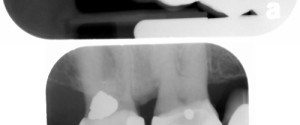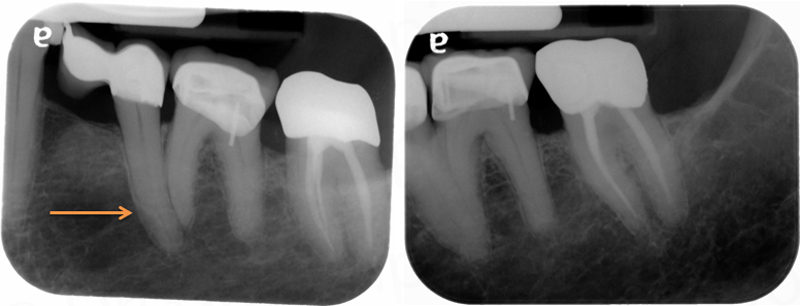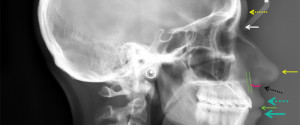Here is the answer for the July 2014 (a) Locate the Object. I will be going over only image shift as the SLOB (Same-Lingual, Opposite-Buccal) rule is difficult (but not impossible) to use when evaluating a vertical angle change.
Image shift
Before starting to use the image shift principle it is important to know/remember two key points
- Images move in the opposite direction from the movement of the source.
- Images of objects farther from the image receptor will move more (aka objects (images) more facial/buccal will appear to move more).
 The first thing to do is pick a stationary object that is seen on both radiographs and appears to move in comparison to the round amalgam. On these radiographs, we will use the pulp chamber of the first molar.
The first thing to do is pick a stationary object that is seen on both radiographs and appears to move in comparison to the round amalgam. On these radiographs, we will use the pulp chamber of the first molar.
The most obvious angle change is to the vertical angle. Starting with the molar bitewing radiograph and moving to the maxillary molar perapical radiograph, the source of radiation (tubehead) moves superiorly increasing the positive (+) vertical angle. According to point 1 above, this means the images move inferior.
Looking at the second radiograph (maxillary molar periapical radiograph), we need to compare the image movement of the round amalgam versus the pulp chamber of the first molar to see which object moved more inferior following point 2 listed above.
The round amalgam appears to be more superior on the radiograph meaning it is closer to the image receptor compared to the pulp chamber of the first molar. This gives us an answer of the round amalgam being on the lingual/palatal surface.
If you have any questions or comments, please leave them below. Thanks and enjoy!




